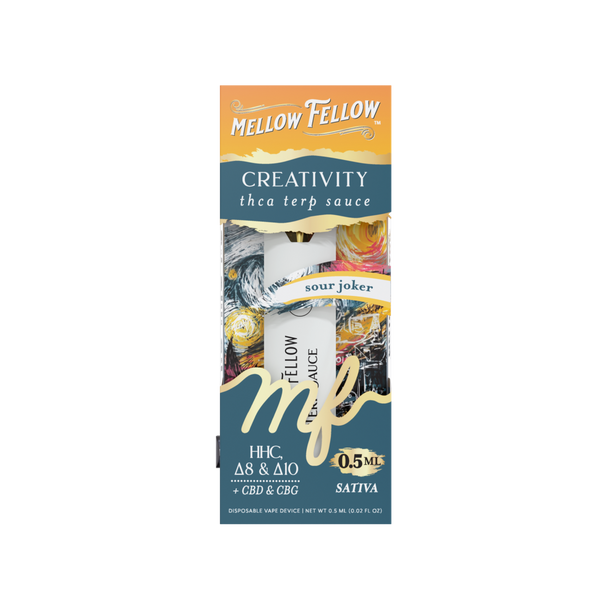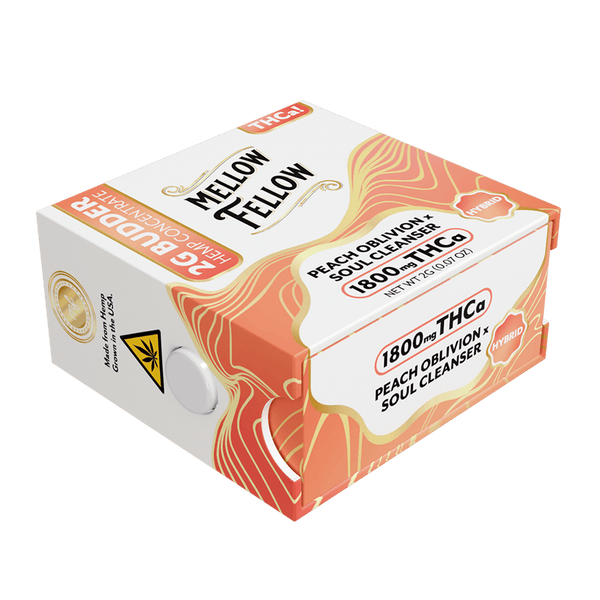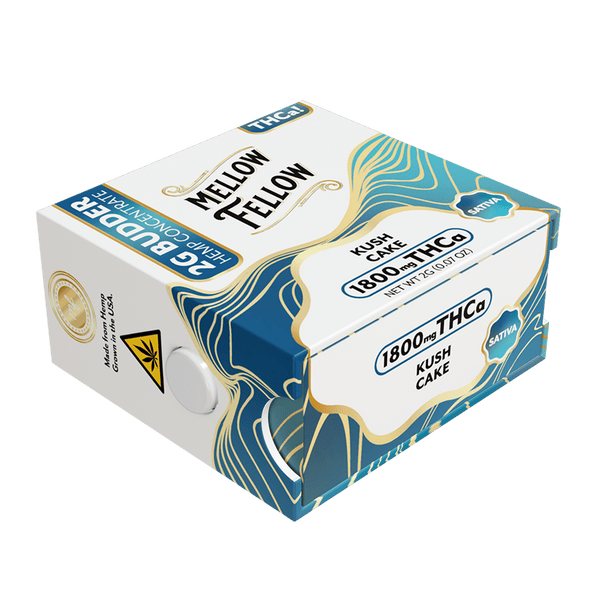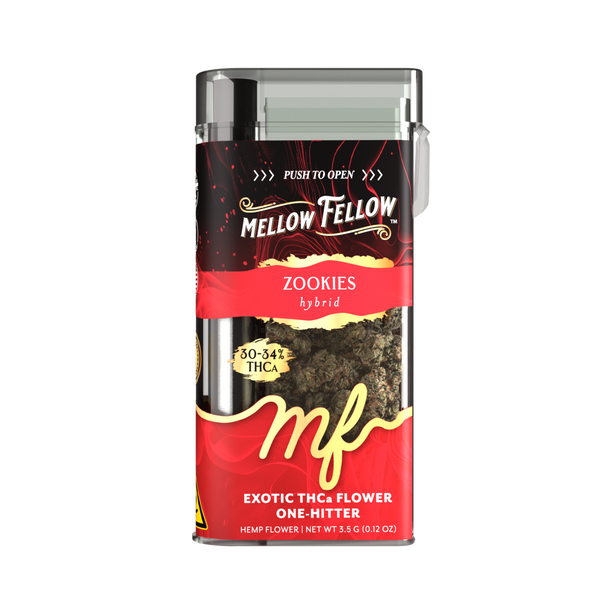HTE vs THCa: Two Concentrates That Define Your Experience

Quick Answer: HTE offers flavor-rich, full-spectrum effects with 20-50% terpenes, while THCa delivers 95-99% potency with minimal flavor. HTE suits daytime, functional use, and THCa suits high-tolerance users. Combining both creates the most complete concentrate experience.
You’re at the dispensary counter - or scrolling online - staring at two completely different concentrates. One looks like golden sauce, the other like sparkling crystals. The budtender drops terms like “terp sauce” and “THCa diamonds,” but doesn’t tell you why one costs more - or which one actually hits harder.
Here’s what’s really going on: cannabis concentrates have two main approaches. HTE puts flavor and full-spectrum effects first. THCa pushes pure potency and THC percentage. Both matter - but neither tells the full story on its own. When you understand how each works, you stop guessing at the counter and start choosing your experience.
Key Takeaways
- HTE delivers a terpene-rich experience with 20-50% terpenes and moderate cannabinoids, while THCa reaches 95-99% purity for intense potency with minimal flavor.
- The extraction process shapes everything: HTE relies on ultra-cold extraction to preserve volatile compounds, while THCa uses crystallization and multiple washes to isolate cannabinoids.
- Effects differ noticeably - HTE offers strain-specific highs and lower anxiety risk, while THCa produces longer-lasting, extreme effects and requires precise dosing.
- Diamonds-and-sauce products blend both types, delivering customizable potency, flavor, and stronger entourage effects than either component on its own.
- For terpene-rich live resins and high-purity THCa concentrates that let you build your ideal experience, Mellow Fellow’s collections are must-try.
HTE vs THCa: Core Properties Breakdown
|
Property |
HTE (High Terpene Extract) |
THCa (Crystalline/Diamonds) |
Which to Choose |
|
Cannabinoid Content |
40-60% THCa/THC |
95-99.9% THCa |
THCa for potency, HTE for balance |
|
Terpene Content |
20-50% terpenes |
<1% terpenes |
HTE for flavor, THCa needs added terps |
|
Consistency |
Liquid/sauce at room temp |
Solid crystals/diamonds |
HTE easier to work with, THCa needs tools |
|
Flavor Profile |
Strain-specific, complex |
Nearly flavorless |
HTE for taste, THCa for neutral base |
|
Production Method |
Low-temp extraction, terpene separation |
Crystallization, multiple washes |
HTE preserves plant profile, THCa isolates |
|
Typical Price |
$40-70/gram |
$90-120/gram |
HTE more affordable, THCa premium pricing |
|
Shelf Stability |
3-6 months sealed (optimal) |
12-24 months |
THCa more stable long-term |
THCa crystals can reach 95-99.9% purity but contain virtually no terpenes, while HTE typically contains significant terpene levels with moderate cannabinoid content. This fundamental difference shapes everything about how these concentrates perform.
What Exactly Is HTE?
High Terpene Extract represents the aromatic soul of cannabis. Producers create HTE by flash-freezing fresh plants immediately after harvest, then extracting at ultra-low temperatures (-40°F to -80°F) to preserve volatile terpenes that normally evaporate during traditional drying.
Studies on cold ethanol extraction demonstrate that extraction at -40°C preserved significantly more terpenes than room temperature extraction, with terpene content decreasing by 32.2% at room temperature compared to -40°C conditions.
The extraction process intentionally separates terpenes from cannabinoids. While THCa crystallizes out, the terpene-rich fraction becomes HTE - a golden, viscous liquid containing:
- 20-50% total terpenes (compared to 1-5% in dried flower)
- 40-60% cannabinoids (mostly THCa before heating)
- Minor cannabinoids like CBG, CBC, CBN
- Flavonoids and other aromatic compounds
HTE isn't just one product - it exists on a spectrum. High-terpene full-spectrum extract (HTFSE) preserves the complete profile, while some producers create custom blends by recombining specific terpene fractions.
Our Creativity Blend Blue Dream Live Resin Vape demonstrates how preserving terpenes through similar low-temperature methods creates more nuanced effects than pure cannabinoid products.
What Exactly Is THCa?
THCa (tetrahydrocannabinolic acid) crystalline represents cannabis at its most pure - and most potent. These crystal formations contain 95-99.9% pure THCa, the non-psychoactive precursor to THC that exists naturally in raw cannabis.
THCa diamonds form through controlled crystallization:
- Initial extraction creates crude oil (60-80% THCa)
- Slow evaporation or pressure changes trigger crystallization
- Multiple washes remove impurities and terpenes
- Final crystals reach near-pharmaceutical purity
The molecular structure of THCa includes a carboxyl group (COOH) that prevents psychoactive effects.
Research on decarboxylation demonstrates that THCa begins converting to THC at temperatures as low as 80°C (176°F), with optimal conversion occurring between 105-120°C (221-248°F) for 30-40 minutes. The theoretical conversion efficiency reaches 87.7% though practical efficiency in dabbing conditions typically ranges from 75-90%.
Effects and Experience: How They Actually Feel
|
Experience Factor |
HTE Profile |
THCa Profile |
Best Use Case |
|
Onset Speed |
2-5 minutes (dabbed) |
3-7 minutes (dabbed) |
HTE hits slightly faster due to terpene absorption |
|
Peak Intensity |
Moderate-high (7/10) |
Extreme (10/10) |
THCa for max potency, HTE for functional highs |
|
Duration |
1-2 hours |
2-3 hours |
THCa lasts longer due to higher THC concentration |
|
Flavor Experience |
Complex, strain-specific |
Minimal to none |
HTE for connoisseurs, THCa needs added flavor |
|
Anxiety Risk |
Lower (terpenes modulate) |
Higher (pure THC) |
HTE for anxiety-prone users |
|
Body vs Head |
Balanced, terpene-dependent |
Primarily cerebral |
HTE offers more variety in effects |
|
Tolerance Build |
Moderate |
Rapid |
THCa builds tolerance faster |
|
Entourage Effect |
Strong |
Minimal |
HTE provides full-spectrum benefits |
The experiential difference goes beyond just potency. Research on terpene therapeutic properties found that cannabis oils often lack the monoterpene content of the original flower, potentially explaining why some patients prefer smoking to oil consumption despite lower THC efficiency.
HTE preserves these modulatory compounds, while THCa delivers pure, unmodulated THC after decarboxylation.
Users consistently report HTE provides a "rounder" high with more predictable effects matching the source strain. THCa delivers raw power but lacks the nuance - like drinking pure ethanol versus aged whiskey.
Production Methods: From Plant to Product
|
Extraction Step |
HTE Process |
THCa Process |
Final Product Characteristics |
|
Starting Material |
Fresh frozen whole plant |
Cured or fresh frozen |
HTE preserves more volatiles |
|
Initial Extraction |
-40°F to -80°F hydrocarbon |
Room temp to cold hydrocarbon |
HTE retains terpenes, THCa loses them |
|
Separation Phase |
Centrifuge or natural separation |
Crystallization over days/weeks |
HTE = liquid fraction, THCa = solid |
|
Purification |
Single pass, minimal processing |
Multiple washes, recrystallization |
HTE less refined, THCa pharmaceutical-grade |
|
Terpene Handling |
Preserved throughout |
Removed and discarded or saved |
HTE = terpene-rich, THCa = terpene-free |
|
Activation Needed |
Yes (contains THCa) |
Yes (non-psychoactive until heated) |
Both require heat to become THC |
|
Combined Yield |
10-15% from fresh-frozen material |
Included in HTE yield |
Split between sauce and crystal phases |
Supercritical CO2 extraction studies found that lower pressures (90-110 bar) and temperatures (40-50°C) allowed fast and efficient extraction of terpenes, while higher pressures (200-300 bar) were needed for superior cannabinoid recovery. This demonstrates why HTE production requires such precise control - terpenes and cannabinoids extract optimally under different conditions.
Temperature Matters: Activation and Consumption
Both HTE and THCa require heat to become psychoactive, but optimal temperatures differ significantly.
THCa Decarboxylation Requirements: Comprehensive decarboxylation research indicates THCa begins decarboxylating around 220°F (104°C) and converts efficiently between 250-300°F (121-149°C) over several minutes. The process follows first-order kinetics:
- 220-240°F for 30-45 minutes (maximum terpene preservation)
- 250-280°F for 10-20 minutes (balanced approach)
- 400-500°F for instant conversion (dabbing temperatures)
HTE Temperature Considerations:
- 315-350°F: Preserves most terpenes, smooth flavor
- 350-400°F: Balanced terpene/cannabinoid activation
- 400-450°F: Full activation, some terpene loss
- 450°F+: Maximum effects, significant terpene degradation
The boiling points of key terpenes (myrcene 334°F, limonene 349°F, pinene 311°F) mean HTE requires careful temperature control. Too hot destroys flavor; too cool wastes cannabinoids. Our testing page shows how different temperatures affect terpene preservation in lab results.
The Best of Both Worlds: Diamonds and Sauce
The cannabis industry's solution to the HTE vs THCa debate? Combine them. "Diamonds and sauce" pairs THCa crystals with terpene-rich HTE, creating premium concentrates that deliver both potency and flavor.
Typical ratios include:
- 70% THCa diamonds + 30% HTE sauce = Potency-focused
- 50/50 split = Balanced experience
- 30% THCa + 70% HTE = Flavor-forward
This combination provides:
- 70-85% total cannabinoids (stronger than HTE alone)
- 5-15% terpenes (more flavorful than THCa alone)
- Full entourage effect
- Customizable experiences through ratio adjustments
Products like our THCa budder bundles show how combining crystalline cannabinoids with terpene-rich bases creates more complete experiences than either component alone.
Analysis of various extraction methods found that while BHO budder and shatter contained the highest terpene content (0.846% and 0.842% respectively), combining THCa diamonds with HTE sauce can achieve significantly higher terpene percentages while maintaining potency.
Practical Usage Guide: Which Concentrate When
Here’s a quick guide on how to choose between HTE and THCa - so you know which one is best for you.

Choose HTE When You Want:
- Maximum flavor and aroma from preserved terpene profiles
- Strain-specific effects matching flower
- Lower anxiety risk through terpene modulation
- All-day functionality without overwhelming potency
- Social consumption with shareable flavor
- Mixing with flower for enhanced taste
Choose THCa When You Need:
- Maximum potency for high tolerance
- Neutral flavor base for custom blends
- Precise dosing calculations (pure compound)
- Long-term storage stability
- Extreme effects for experienced users
- Making edibles with exact THC content
Combine Both When:
- Premium experience is the goal
- Hosting or special occasions
- Dialing in perfect effect ratios
- Creating custom terpene-cannabinoid blends
- Maximum flexibility in consumption
Storage and Stability Comparison
HTE and THCa have vastly different storage requirements due to their physical properties.
HTE Storage (3-6 months optimal, 12 months maximum): Terpene stability research indicates HTE faces challenges including:
- Must stay sealed (terpenes evaporate rapidly)
- Refrigeration recommended (35-40°F optimal)
- Dark glass containers only
- Degrades faster once opened
- Consistency changes with temperature
THCa Storage (12-24 month stability):
- Room temperature stable
- Less sensitive to air exposure
- Can handle temperature fluctuations
- Maintains potency longer
- Crystals don't degrade like liquids
For long-term storage, THCa wins. For ready-to-use convenience, HTE's liquid form requires less preparation. Always check COAs dated within 6 months - terpene profiles change over time while THCa remains stable. Our guide on storing cannabis products provides detailed preservation methods for various concentrate types.
Making Your Decision: Consumption Scenarios
Here are a few scenarios to consider when choosing between these two cannabis concentrates.
Morning Motivation: HTE wins - terpenes like limonene and pinene provide clarity without overwhelming intensity. Try sativa-dominant HTE at 350°F for functional effects.
Pain Management: THCa for breakthrough pain, HTE for maintenance. The anti-inflammatory effects documented in cannabinoid pain research show terpenes like caryophyllene complement cannabinoids in HTE.
Creative Projects: 50/50 diamonds and sauce - enough potency to shift perspective with terpenes guiding the experience toward productivity rather than couch-lock. Our creativity-focused products demonstrate this balance.
Sleep Support: HTE with myrcene-dominant profiles. Pure THCa can be too stimulating; terpenes provide sedation. Research shows myrcene content above 0.5% produces sedating effects.
Social Settings: HTE exclusively - more predictable, less likely to overwhelm, better flavor for sharing. The social anxiety guide explains how terpenes moderate social effects.
Building Tolerance Break: Pure THCa will reset faster due to intensity, but HTE helps avoid the "all or nothing" tolerance spike.
The Future: Where Concentrates Are Heading
Choosing between HTE and THCa comes down to how you want your cannabis to perform. HTE mirrors the strain’s natural profile with 20-50% terpenes that shape mood, flavor, and predictability.
THCa delivers pure strength at 95-99% purity but sacrifices complexity and aroma. Diamonds-and-sauce blends merge both worlds, giving users the ability to tailor potency and flavor to any time of day or tolerance level.
Understanding extraction methods, ideal temperature ranges, storage rules, and real-world use cases helps you build consistent and intentional sessions. When you know how each extract behaves, you move beyond guessing - and start choosing with purpose.
Our live resin collection demonstrates this evolution - products that preserve the full spectrum while maintaining consistency batch to batch. The future isn't HTE versus THCa; it's understanding how both contribute to the complete cannabis experience.
Frequently Asked Questions
What Temperature Is Best for Mixing HTE and THCa Together?
A balanced range between 350-400°F allows THCa to activate while still preserving major terpenes in HTE. This range keeps flavor intact and prevents burning off key aromatic compounds. If you prefer stronger effects, a brief bump to 420-450°F can increase potency, but expect some terpene loss. Start lower and raise temperature gradually to find your preferred intensity and flavor balance.
Can THCa Be Used for Microdosing?
Microdosing with THCa is possible but requires extra precision due to its purity. Even small amounts convert to high THC levels once heated. To microdose, use a digital scale and begin with very small doses, then wait several minutes to assess effects. Some users mix THCa with HTE to soften the experience and make dosing easier to control.
Does HTE Work Well with Flower?
Yes. Many consumers mix HTE with ground flower to boost flavor and aroma while keeping potency at manageable levels. The terpene content enhances taste and can shape the overall effect toward clarity, relaxation, or motivation depending on the strain. Low-temperature vaping or careful combustion helps preserve terpene integrity during use.
How Does THCa Affect Tolerance Levels?
THCa builds tolerance rapidly due to its high cannabinoid concentration. Users who consume only diamonds often report shortened tolerance breaks and a sharper drop in effect over time. Cycling between HTE and THCa - or using blends - may help maintain stronger effects while keeping tolerance manageable.
Can I Store HTE and THCa Together?
You can store them in the same container if the seal is tight and the ratio is intentional, but HTE requires more protection than THCa. HTE should be kept in dark glass, sealed, and refrigerated to preserve terpenes. THCa handles room temperature and air exposure better, making it easier to store long term.
Are Diamonds-and-Sauce Products Better Than Single Extracts?
They can be. Diamonds-and-sauce blends combine terpene modulation with powerful THCa potency, creating wider effect ranges than single concentrates alone. Ratios like 50/50 or 70/30 let users tailor their experience and experiment with different times of day, purposes, or moods. This flexibility is one reason the concentrate market continues to shift toward combined formulas.
Sources
- The Endocannabinoid System, Cannabinoids, and Pain - PMC
- Cold Ethanol Extraction of Cannabinoids and Terpenes from Cannabis Using Response Surface Methodology: Optimization and Comparative Study - PMC
- Decarboxylation Study of Acidic Cannabinoids: A Novel Approach Using Ultra-High-Performance Supercritical Fluid Chromatography/Photodiode Array-Mass Spectrometry - PMC
- Optimal Treatment with Cannabis Extracts Formulations Is Gained via Knowledge of Their Terpene Content and via Enrichment with Specifically Selected Monoterpenes and Monoterpenoids - PMC
- Supercritical CO2 extraction of hemp flowers: A systematic study to produce terpene-rich and terpene-depleted cannabidiol fractions - ScienceDirect
- THC Decarboxylation Curve: Temperature and Time Factors - Biology Insights
- Which Extract Has The Highest Terpenes | High Times
- Drawbacks of Using HTE in Vapes: Technical Challenges for Manufacturers | Terpene Belt Farms
Share on Social

















Leave a comment